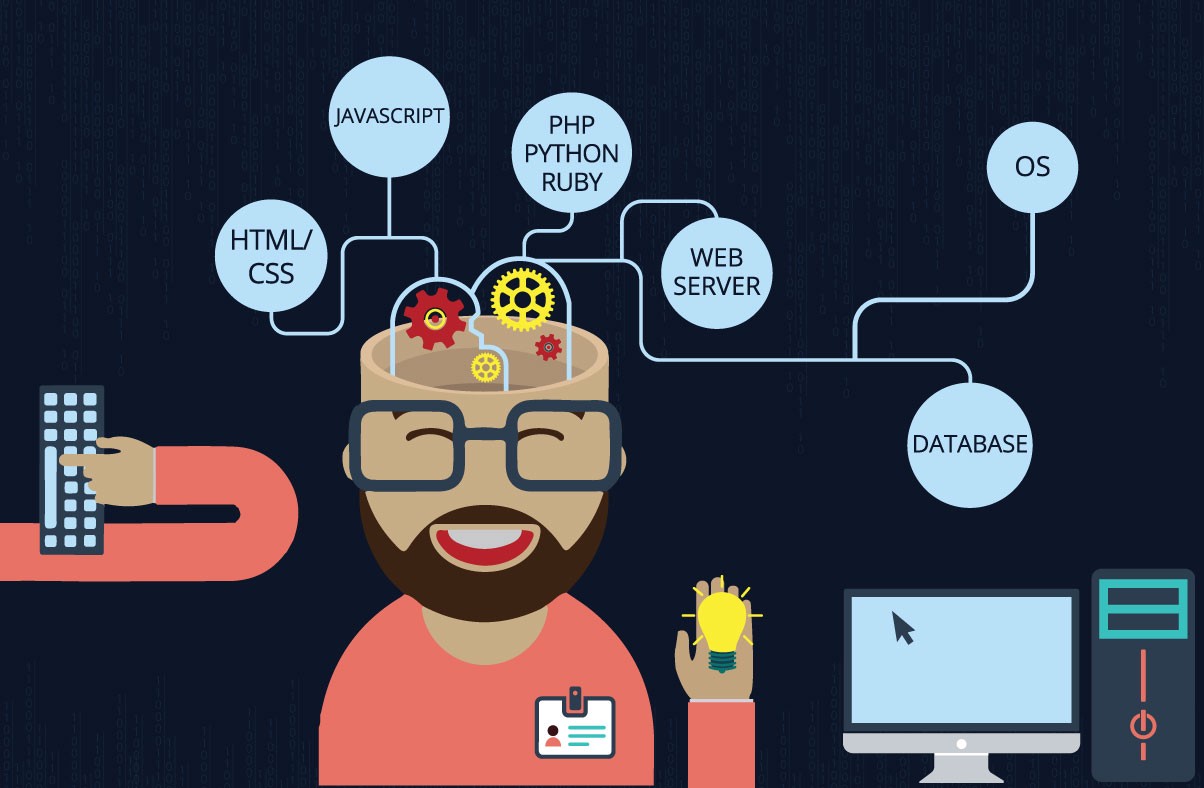A full-stack developer is one of the technology domain's most sought-after positions. The boom in this field has led to both web-based and in-class training centers being mushroomed. This helps individuals become full-stack developers. Some of these centers also sponsor trainees to finish the course.
A full-stack developer is an individual who can handle all the database, server, network development, and application jobs for a given project. Depending on the project, a smartphone stack, a web stack, or a native application stack maybe what customers need. "Full-stack" actually refers to gathering a collection of the technologies required to complete a project. "Stack" refers to a sub-module array. These sub-modules or components of the software are combined to achieve the established function while not requiring other modules.
A full-stack developer is a senior level job for someone with full-stack developer skills. However, they also need project management expertise in issues like configuring, controlling, and maintaining computer networks and programs. A web application programmer who is specializing in coding both the front end and the back end sections is called a full-stack web developer. The front end is the part that the user sees and uses in the web application. Next, the back end is a component of the framework that operates behind the scenes and executes user-issued commands.

Basic Information About Full-Stack Development
A full-stack developer is a web developer or engineer operating with both the front and back ends of a website or app. In other words, they will address projects involving databases, creating websites, or even collaborating with consumers during project planning.
As the line between what can be on the front end and back end is becoming increasingly blurred, more developers are becoming what we call "full-stack." Most employers are looking for developers who know how to work on all aspects of a platform. In this way, they can use the right tools for the job irrespective of whether it is technically "front end" or "back end."
Front-End Developer
Front-end developers build transparent parts of websites that users see and communicate through. The front end of a website (or cloud or mobile application) is the component that a user sees and communicates directly with. The front end work with languages like the following.
- HTML
- The backbone of the Internet is the HTML (HyperText Markup Language). Any website that you visit uses HTML. It holds all the structure and material in mind. HTML5 is the latest internet-based implementation of HTML. However, sites built with older versions are still running fine in your browser.
- CSS
- CSS (Cascading Style Sheets) governs how the HTML appears on the website. This sets the colors, fonts, background images, and even how the template is laid out. You can use CSS to organize the HTML elements on a website however you want. Also, if it's different from the order they're in within the HTML file. CSS3 is the latest web-based CSS update, which brings a lot of enhancements to things like basic interactivity and animations.
- JavaScript
- You can create a website with only HTML and CSS, but the game-changer is JavaScript. JavaScript allows you to incorporate more complex animations in interactivity and even allows the production of fully-featured web applications.
In short, developers at the front end use HTML, CSS, and JavaScript to build websites. They are the ones who take the concept and create a website that works. Solely HTML, CSS, and JavaScript create some pages. Nevertheless, some sites have more technology concealed in the rear end of the site, to improve or boost the front end of the website.
Back-End Developer
Back-end developers build the "under the hood" sections of websites that users don't explicitly communicate with. While the front end is all the consumer interacts directly with, the back end is much more behind the scenes. They also work with the specific projects that can have some advantages over front end technologies. The programming languages used at the back end include the following.
How To Get Started
Step 1: Learn The Various Languages & Practice
It would help if you were sure and knowledgeable about the fundamentals, as well as complex concepts. JavaScript, HTML, and CSS constitute the basis for web development. You should be clear about all aspects of those technologies for any beginner.
Check your expertise. Create web pages for testing and apply the concepts learned during your course. In 99% of all web applications, JavaScript can be included. Become competent in its use. Knowledge of programming concepts can help to improve coding competencies.
Step 2: Know The Technologies
When your leaning repertoire grows, you'll know there's a lot more to learn than you can possibly master. Many programmers struggle because they are trying to learn too many things These efforts aren't required. Master one and simply understand the rest. Learn how to work in them, and it ought to be good enough.
Step 3: Upskill
Even the best-prepared developers should be willing to continue to learn new things and remain relevant. New technologies frequently join the field. A full-stack developer needs to stay current with those changes. An easy way to keep upskilling is to take online or virtual classes.
How To Apply For A Job
Look at the some of the full-stack developer jobs listed on platforms like Indeed. These positions usually demand at least 3-5 years of full-stack web development experience. Still, full-stack development jobs are the kind of roles that you can look forward to having after spending some time in the industry. In the meantime, make sure you are constantly building your resume and skillset.

Conclusion
If you're dreaming of working for a big tech company, full-stack developer jobs are a way to get there. This job is ever-changing and requires you to have extensive web development skills.
For more jobs for Filipinos, click here.



